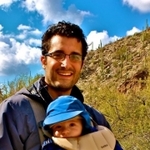Many body techniques for the description of bound and unbound nuclei
| Date/Time: | Thursday, 06 Feb 2014 from 4:10 pm to 5:00 pm |
|---|---|
| Location: | A401 Zaffarano Hall |
| Contact: | |
| Phone: | 515-294-8894 |
| Channel: | College of Liberal Arts and Sciences |
| Actions: | Download iCal/vCal | Email Reminder |
We are entering an exciting new era in low energy nuclear physics. With the advent of powerful radioactive beam facilities around the world, nuclei that reside in very exotic regions on the nuclear chart can now be produced and studied in the laboratory - nuclei that until now were only produced in astrophysical environments on a pathway to heavy element formation. These exotic nuclei with very high N to Z ratio, with weak binding and short lifetimes, may exhibit radically different behavior as compared to nuclei close to the valley of stability. At the same time, their theoretical description is a major challenge due to computational limitations and/or the neglect of important degrees of freedom. It is known that the coupling to the continuum, which becomes stronger near the limits of nuclear stability, is one of the decisive factors that alters the properties of weakly bound nuclei. Hence the description of such exotic nuclei calls for methods that will include continuum degrees of freedom in their framework and/or treat bound, unbound, and scattering states on equal footing. In this talk I will address the progress and the developments that have been achieved the last years for the theoretical description of these nuclei, including prospects for ab initio calculations with chiral nucleon-nucleon plus three-nucleon interactions, with the goal of testing and maximizing the predictive power of the theory.
